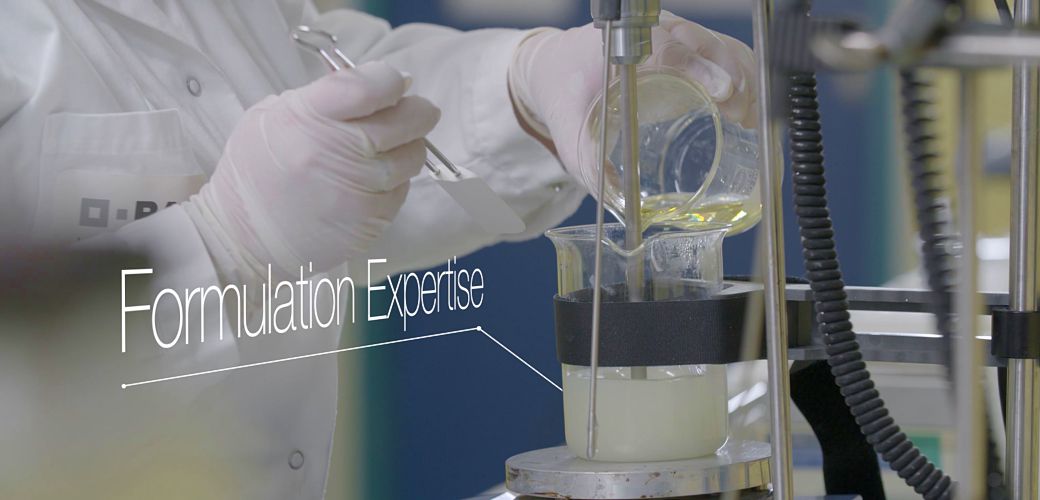
Sun protection
About claims
When a new cosmetic product is launched on the market, it is time to switch on the advertising megaphone – loudly. The product can do this, that and the other. Before that can happen, however, researchers and developers need to back up the advertising claims with validated tests and results . Customers and end users have to be able to rely on the statements made about the products.
Let’s take a quick look back into the past, when sunscreens were first conquering the cosmetics market in the last millennium, thanks in part to promotions and advertising campaigns. Back then, sunscreens were advertised as having a major benefit for people in their ability to ward off sunburn while getting a more beautiful and more healthy-looking tan. And all this with a sun protection factor of way below 10. Whether skiing or taking a beach vacation: consumers simply wanted to have sun-tanned skin to look good. They wanted to be kissed and seduced by the sun.
Would you still buy this type of sunscreen product today? Almost certainly not. Latest scientific knowledge, subsequent developments in the industry and, above all, in our collective awareness have advanced too far. And thank goodness for that. Because we now know that the previously desirable “healthy” tan doesn't exist and that protection from skin cancer, and from premature signs of skin aging such as wrinkles and blotches are the benefits that need to be listed for sun protection products.
Even though consumer preferences and needs have changed, and advertising has been replaced by marketing and PR, one thing has remained the same: Without the right promises and the right campaigns, your product will barely sell. After all, who wants to buy anything without knowing what's in it?
The 6 pillars of consumer safety
- Regulatory compliance
- Truthfulness
- Proof
- Honesty
- Integrity
- Informed decision-making
Consumer safety is the top priority
We have already looked at consumer safety several times here on our website. One thing needs to be said clearly up-front: even if you don't recognize the list of ingredients in a face cream, shampoo or sun lotion, you can be 100% sure that the products are safe and can be used without any concerns. This is ensured by the EU Cosmetic Products Regulation (EC 1223/2009).
Article on the topic:
But what is the situation with advertising claims? Does the product that shouts the loudest still get the most customers? No, because consumer protection also applies here. In addition to the above Cosmetic Products Regulation, for many years we have also had EU Regulation 655/2013 in place. It regulates the claimed effects, advertising promises and other claims made for cosmetic products.
In principle, we can sum up this regulation briefly and concisely as follows: all statements made by advertisers must be clear and understandable. It must be possible to document them and give the consumer the basis for making an informed buying decision. Social, cultural and linguistic factors in the target market also play a role in the acceptability of an advertising claim. Consumer safety is the top priority. More on the topic at the Federal Office of Consumer Protection and Food Safety (BVL)
Tests and methods for verification
Claims also play an important role at BASF. This is the case for our direct customers, i.e. the manufacturers of the finished sun protection products. For their formulations, they need solid, reliable values and statements to allow them to create a product for a specific target market (e.g. SPF, format, eco-friendly). Of course, the claims and advertising statements found on the products are also important for the end consumers. They want to know what the product they are buying will deliver, and need to be able to rely on it.
For BASF this means that, in addition to scientific expertise, both transparency and ability to provide proof of our own statements are of enormous importance. As a supplement to the tests used to measure the standard factors (SPF + UVA-PF), we developed own innovative methods to reliably substantiate product benefits and outstanding performance characteristics.
A key example: When it comes to UV protection, we hear and see time and again how important photostability is. Photounstable filters break down when exposed to sunlight, creating new molecules or free radicals. Free radicals are known to react very quickly with other sensitive molecules either in formulations or in the skin. This can cause skin reactions. This is, of course, undesirable and must be prevented. This is why the use of photostable UV filters, which remain stable when exposed to sunlight, is of particular interest.
Benefits for the end user
When buying a sunscreen, the majority of consumers pay most attention to the sun protection factor. This value is in fact tested directly on humans, in what is known as an in vivo process. If SPF 50 is on the packaging, then this is guaranteed. To ensure this is true worldwide, there is an ISO standard: ISO 24444. BASF plays a leading role in the development of new standards. However, a high sun protection factor alone does not ensure the best sunscreen.
Claims about a sunscreen's water resistance are not only of interest and important for those consumers who are about to go on a beach vacation. These customers in particular do of course want to be able to rely on the fact that the product guarantees a certain level of water resistance. Our colleague Bernd explains when a sunscreen is considered “water resistant” in the video below. Even so, remember to reapply sunscreen after swimming.
Don't forget UVA protection
In essence, these examples would appear to have covered all the buying criteria. Or are there perhaps other areas that can seal the deal when choosing which sunscreen to buy? There definitely are. Besides UVA protection there are yet other criteria. How it feels on the skin plays an increasingly important role, and not only in daily skin care and widely available skin products. For sun protection, too, consumers want to feel comfortable when the products are on their skin.
There are tests and methods to assess the sensory properties and behavior both during and after application. The ultimate aim is to be able to formulate the right advertising claim. Based on measured values. For customers and for end consumers.
How water-resistant are “water-resistant” sunscreens?
Water-resistant sunscreens are always packed for beach vacations. But what does "water-resistant" really mean? There are a few details that are important to pay close attention.
What is actually tested and verified in the case of UV filters and sunscreen products? We took a walk around the laboratories in Grenzach and peeked over the shoulders of our colleagues from the Development and Technical Service departments. This raised a few questions.
Stanislaw, people always say Grenzach is the home center of excellence for sun protection...
Stanislaw Krus: Yes, that’s right. We work on innovative, high-performance UV filters for cosmetics and sunscreen formulations, with the aim of satisfying future trends and expectations. Research and development is an important pillar in this, as is our technical service, which helps manufacturers of sunscreen products worldwide in selecting their own optimum filter combinations. We also have production facilities here for our UV filters, which are manufactured for the global market according to strict good manufacturing practice (GMP) guidelines, and the highest quality standards. We are more than just a point of contact for our customers. We also go way beyond simply selling our UV filters.
We saw numerous test stations and instruments in the laboratories. We were surprised by some of their features. We wouldn't have expected that you would be conducting stain tests, for example……
Brigitte Lindemann: Why not? Have you never got sunscreen on your T-shirt and found the stain didn't come out even after washing?
Of course. Unfortunately this happens quite often.
Brigitte: Exactly. A good reason why we want to get to the bottom of these stains. We developed a staining test to examine how strongly a sunscreen stains a fabric and how it can best be washed out of the textiles. The ideal would be to achieve formulations and concepts with reduced fabric staining or even preventing stains occurring. That could be a real selling point for some customers.
A colleague was testing a new method for determining in vitro how water resistant sunscreens are. This method was invented by BASF. How does this test work? We imagine it's a little more complicated than simply pouring water over the sunscreen and measuring the amount of sunscreen left in place, right?
Myriam (laughing): Honestly? It is indeed a little more complicated and not very easy to explain. To simplify it: two test surfaces with applied sunscreen are dipped in water and two others are kept dry. We then measure how much cream remains on each surface and simulate how water resistant the sunscreen is. In the end, we have a reliable value.
In one lab a Brookfield measurement was being carried out. What does that mean?
Stanislaw: This tells us about the viscosity of a formulation. This test is part of our stability measurements. The product should not change for a given period of time. If it thickens, there is a risk that it will not come out of the bottle when the consumer wants to apply it. If it is too thin, it could leak or there is a risk the sunscreen product may become unstable. No one wants that, so we have to prevent it and control the viscosity during storage.
Is there an area in terms of claim support that you are particularly proud of? Maybe because some things are only done here?
Myriam: There is something, actually. We are very proud of our EcoSun Pass. BASF experts (e.g. ecotoxicologists, R&D) have developed a methodology that takes all relevant published data studies into account, and determines the impact UV filter combinations on the environment. Our EcoSun Pass allows our customers to develop more eco-friendly sunscreens. Some of them even publish this claim on their packaging and communicate it to their consumers. The EcoSun Pass is really fantastic. Take a quick look at the following website: LINK https://www.carecreations.basf.com/ecosunpass
How important is it to customers that BASF works so intensively on the claims and claim support?
Myriam: I am sure it is very important to our customers. After all, we work closely with them and share information. This generates ideas, which in turn can lead to new methods and claims.
Thank you to our colleagues from Grenzach for taking the time for this conversation. See you again soon on our sun page.

